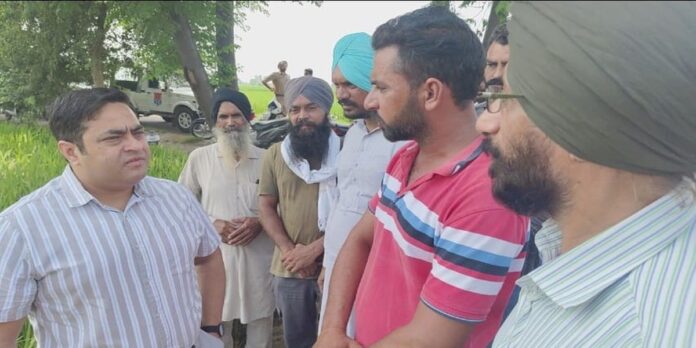Moga: As sowing of wheat in current Rabi season is almost complete, it’s the time to look back on the experience of dealing with the stubble burning issue and the damage caused to the quality of the air all stakeholders breathe in.
This learning of new lessons, if any, from the statewide incidence of burning the paddy straw is all the more vital because the residue burning continues from season to season without any letup.
And since this is a statewide problem, which has regional connect in terms of cause and effect, the example of Moga district in dealing with the problem this season should serve the purpose.
A vigorously proactive approach of the district administration led by the Deputy Commissioner (DC) Vishesh Sarangal, focusing on motivating farmers against burning stubble despite system’s inherent handicaps, has brought about a tangible reduction of the burning incidents in the district.
Out of the total 1.7 lakh hectare under paddy in the district, the total incidents reported were 585, mostly single acre cases. This is a very significant reduction from 2795 burning cases reported last year. Percentagewise this comes of about 75% reduction. A heartening development…!
Apart from his personal field visits since onset of the paddy season, he got a comprehensive awareness campaign conducted across the district. A host of measures were adopted prominently like setting up of a Control Room where all information regarding availability of crop residue management (CRM) machinery was made available. Arrangement of in-situ and ex-situ machinery was made for the needy farmers on daily basis.
It’s not that the legal measures put in place by the government to deal with the problem weren’t resorted to. The FIRs were registered in all 690 reported cases. As many as 41 officials were served notices for laxity in duty. The prosecution cases against 12 officials have been filed under Section 14 of the Commission for Air Quality Management (CAQM) Act which entails stringent punishment.
At the core, however, remains the motivation factor making all the stakeholders particularly farmers realize the far-reaching ill-effects of burning the stubble. Incentivising them is definitely an enabling measure but it should be applied in those cases of farmers who can’t afford equipment to dispose of the residue.
As per above shown data, out of the total area under paddy in Moga district, the area on which the residue was burnt is distantly far less. The question that instantly pops up is: What makes farmers of that large area have rejected the stubble-burning as a solution to prepare the fields of the next crop?
“Their motivation is from the scriptures. These farmers are following the Guru’s teaching: Pawan Guru, Pani Pita, Mata Dhart Mahat (Air is Guru, Water is Father, Earth is Mother). They have taken up ecologically sustainable way of sowing new crop season after season,” remarked the young DC.
His conviction was amply borne out by a very inspiring case of village Khosa Pando on Moga-Zira road. The farmers of this village have not been burning the stubble for years led by Sant Gurmit Singh Ji who himself practices organic farming here.
A small farmer Chamkaur Singh of Ramoowal Kalan is another example of farming while respecting the Nature as preached by the Gurus. “I use the stubble as fodder for my domestic milch cattle. Burning crop residue is a crime against the Nature for this practice also burns crop-friendly small living organisms to death,” said this ex-serviceman who took to farming a few years ago after retiring from the Army.





